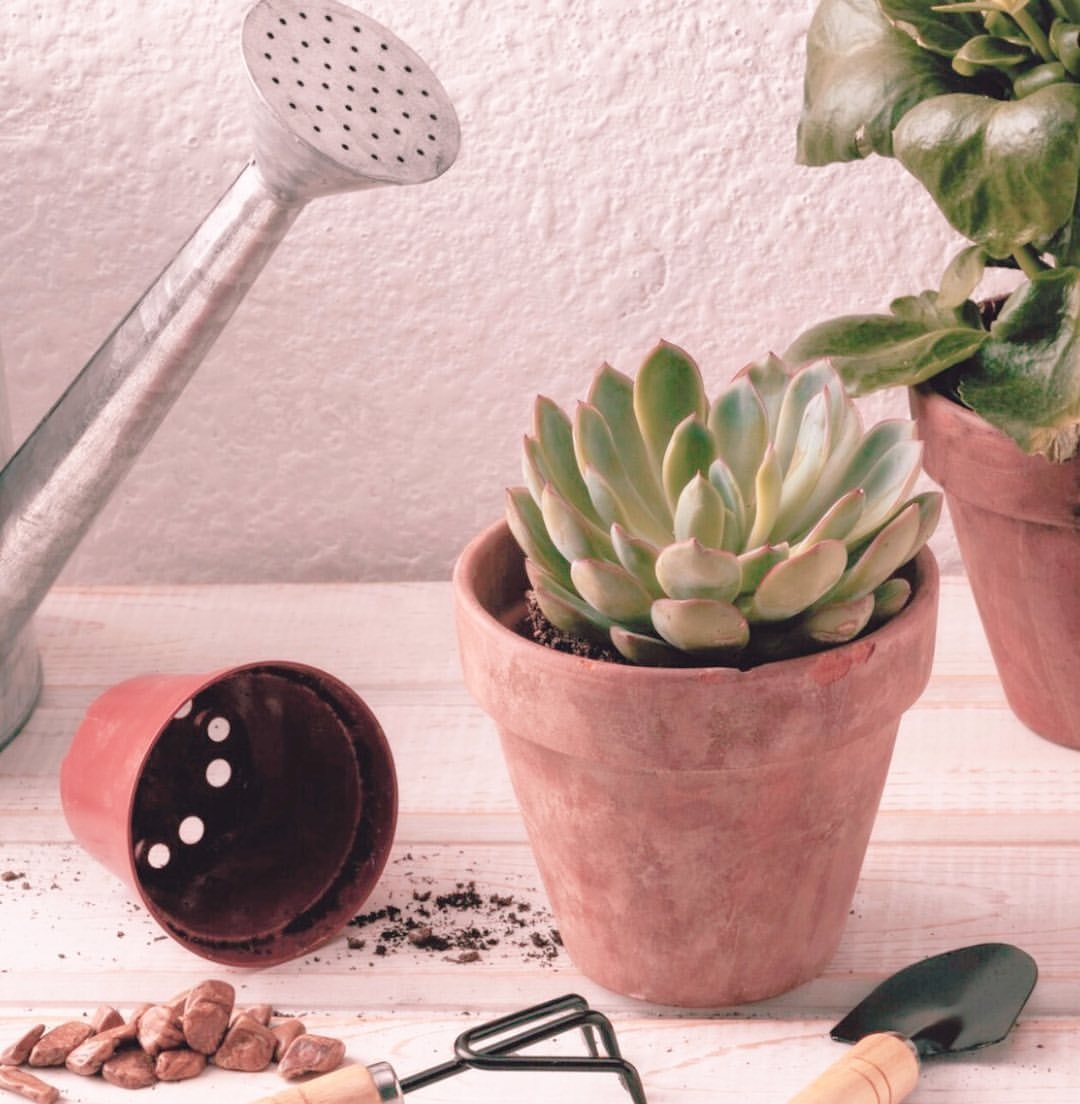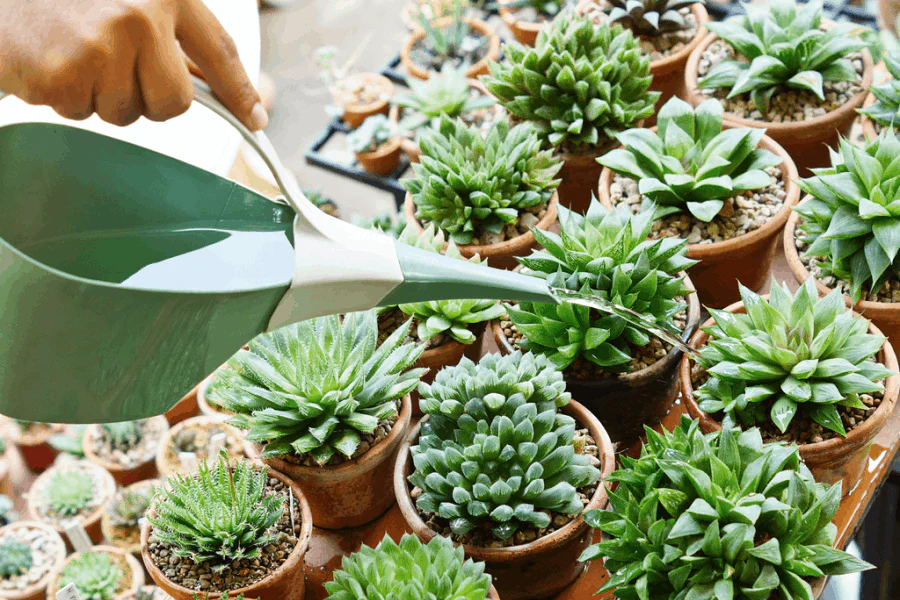Unlock the secrets to growing vibrant, healthy Succulents with this easy-to-follow guide. From proper soil and sunlight to watering and maintenance, these 5 steps will ensure your Succulents thrive.
Succulents have taken the gardening world by storm, captivating plant enthusiasts with their striking shapes, vibrant colors, and low-maintenance charm. These resilient plants are perfect for busy gardeners or those living in arid regions, offering a delightful array of textures and forms to enhance any outdoor space. However, even though Succulents are known for their drought-tolerant nature, they still require some care and attention to thrive.
| Aspect | Details |
|---|---|
| Botanical Name | Various genera (e.g., Aloe, Echeveria, Sedum, Crassula) |
| Plant Type | Perennial plants |
| Zones | Typically USDA Zones 3-11, depending on the species |
| Exposure | Full sun to partial shade |
| Bloom Time | Varies by species; generally spring to fall |
| Height/Spread | Varies widely; can range from a few inches to several feet tall and wide, depending on species |
Step 1: Choose the Right Soil and Container

Proper soil and drainage are crucial for the success of your succulents. These plants are accustomed to arid environments and cannot tolerate waterlogged conditions, which can lead to root rot and eventual death.
When it comes to soil, it’s best to use a specialized succulent or cactus soil mix. These mixes are designed to be well-draining and nutrient-rich, providing the ideal environment for your succulents to flourish. If you prefer to create your own soil blend, mix regular potting soil with coarse materials like perlite, pumice, or small gravel to improve drainage.
Equally important is the choice of container. Opt for pots or planters with ample drainage holes to allow excess water to escape easily. Terra cotta and ceramic containers are excellent choices as they allow the soil to breathe and dry out properly between waterings. Avoid using containers without drainage holes, as this can lead to waterlogged soil and root rot.
Step 2: Provide the Right Amount of Sunlight

In this comprehensive guide, we’ll walk you through five simple steps to ensure your succulents remain healthy, vibrant, and thriving. Whether you’re a seasoned green thumb or a beginner, these easy-to-follow tips will help you create a stunning succulent garden that will be the envy of your neighborhood.
Succulents are sun-loving plants, and providing the appropriate amount of sunlight is essential for their growth and overall health. Most succulents thrive in full sun exposure, requiring at least six hours of direct sunlight each day. However, some varieties, such as certain echeverias and haworthias, may appreciate partial shade, especially in hot climates.
When positioning your succulents, consider their specific light requirements. If your outdoor space lacks sufficient sunlight, consider placing your plants on a sunny patio, deck, or windowsill. You can also supplement natural light with grow lights or strategically position mirrors to reflect additional light onto your plants.
Step 3: Master the Art of Watering

One of the most common mistakes when caring for succulents is overwatering. These plants are adapted to arid environments and can easily succumb to root rot if their soil remains constantly moist. The key to successful watering is to allow the soil to dry out completely between waterings.
During the active growing season (spring and summer), water your succulents thoroughly, ensuring the soil is saturated. Then, wait until the soil is completely dry before watering again, which may take a week or more, depending on the climate and plant size. In winter, when growth slows, reduce watering even further.
It’s also important to consider the type of water you use. Rainwater or distilled water is ideal, as tap water can contain minerals and chemicals that may harm your succulents over time. If using tap water, allow it to sit for 24 hours before watering to allow any chlorine to dissipate.
Step 4: Fertilize Sparingly

Succulents have minimal nutrient requirements, making them relatively low-maintenance in terms of fertilization. In fact, over-fertilizing can lead to excessive growth, which can compromise the plant’s overall health and appearance.
If you choose to fertilize, use a balanced, water-soluble fertilizer diluted to half the recommended strength. Apply the fertilizer during the active growing season, typically in spring and early summer. Avoid fertilizing during the winter months when growth is dormant.
Alternatively, you can incorporate a slow-release fertilizer into your soil mix at the beginning of the growing season. This method provides a consistent, slow supply of nutrients to your plants without the risk of over-fertilization.
Step 5: Prune and Maintain for Optimal Growth

Regular pruning and maintenance are essential for promoting healthy growth and maintaining the aesthetic appeal of your succulent garden. Remove any dead, damaged, or stretched-out leaves or stems to encourage new growth and prevent the plants from becoming leggy or unsightly.
Additionally, some succulents may benefit from periodic “beheading,” where the top portion of the plant is removed to encourage new growth and prevent them from becoming too tall or stretched out over time. This process not only rejuvenates the plant but also allows you to propagate new succulents from the removed portion.
During the growing season, keep an eye out for any signs of pests or diseases, such as discolored leaves, wilting, or the presence of insects. Promptly address any issues with appropriate organic or chemical treatments to prevent further damage to your plants.
Conclusion
Succulents are a gardener’s dream, offering a stunning array of shapes, colors, and textures while requiring relatively low maintenance. By following these five simple steps – choosing the right soil and container, providing ample sunlight, mastering the art of watering, fertilizing sparingly, and maintaining your plants through pruning – you’ll be well on your way to creating a vibrant, thriving succulent garden.
Remember, succulent care is all about striking the right balance – providing just enough water, sunlight, and nutrients to keep your plants healthy without overdoing it. With a little patience and attention, your succulent garden will flourish, offering a low-maintenance yet visually stunning display that will bring joy and serenity to your outdoor living spaces for years to come.
Pingback: Succulents Care: 5 Steps for Healthy, Thriving ...
Pingback: Caring for String of Pearls - Back Gardener
Pingback: Nerve Plant: A Comprehensive Care Guide -
Pingback: Black Spot on Roses: A Comprehensive Guide for Healthy and Vibrant Blooms
Pingback: Self-Watering Indoor Plant Pots Gardeners Schools
Pingback: Welcoming Front Gardens: Creative Design Inspirations
Pingback: Huernia Macrocarpa: Everything You Need to Know
Pingback: The Best Hanging Plants to Grow in 2024: Top 20 List
Pingback: 10 Mesmerizing Pink Succulents You Need in Your Collection!
Pingback: Power of Chicken Manure Pellets : A Gardener’s Guide to Nutrient-Rich Goodness
Pingback: How to Grow and Care for an Aloe Vera Plant
Pingback: Discover the 9 Best Mother of Thousands Varieties | Mother of Millions Types
Pingback: The Ultimate Guide to Cleistocactus Icosagonus